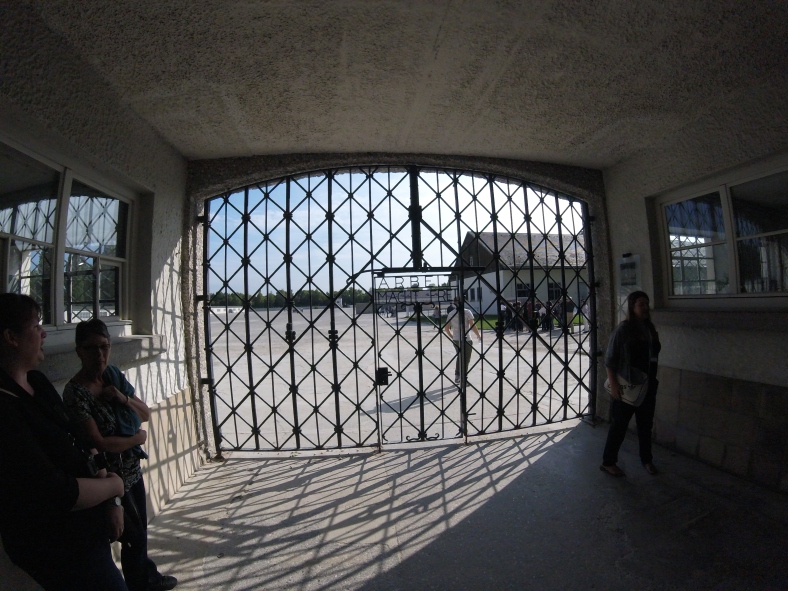
The entrance to Dachau Concentration Camp. The sign reads “Arbeit macht frei”, which means
“Work sets you free”.
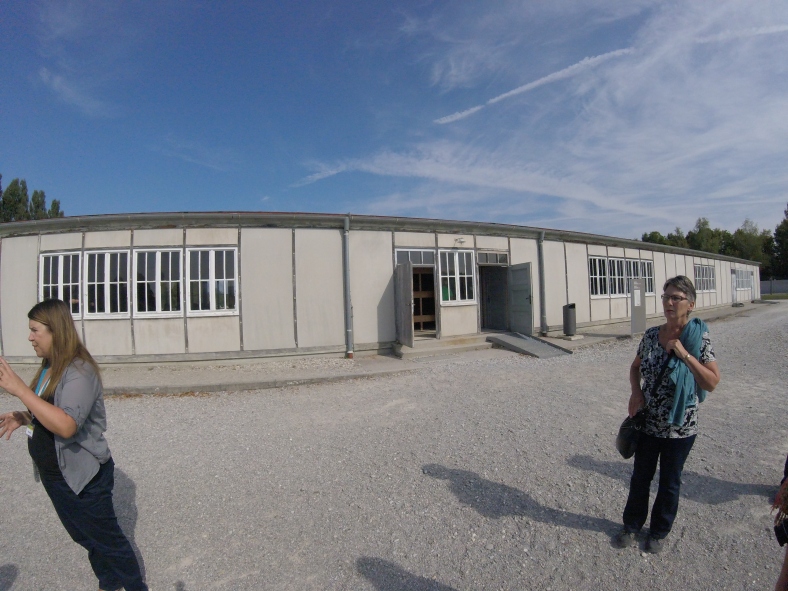
An
outside view of the prisoners’ living corridors. Several years after
the camp was liberated, the
original living corridors were completely destroyed. This would be an exact replica, with some of
the original sinks and toilets placed back in the bathrooms.
original living corridors were completely destroyed. This would be an exact replica, with some of
the original sinks and toilets placed back in the bathrooms.
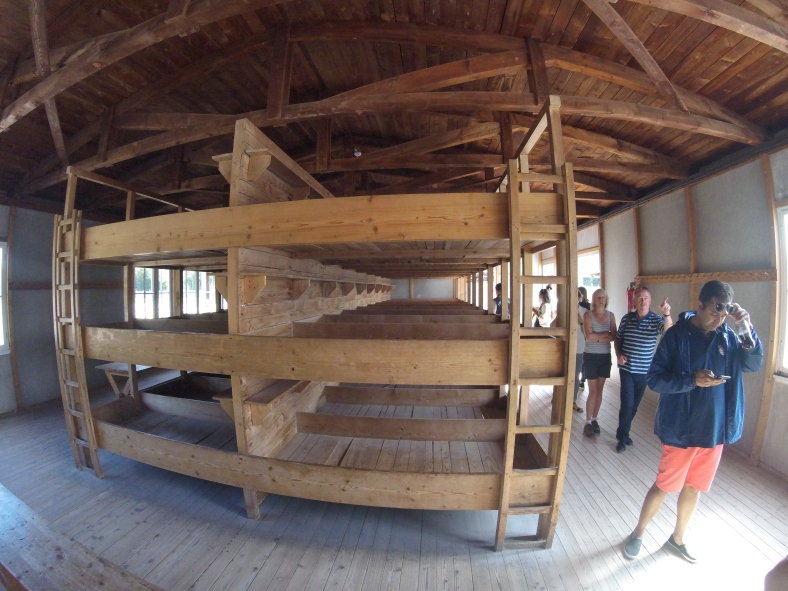
When
the camp first began operations in the early 1930’s, this was the
typical layout of the rooms.
At this time, risoners had their own bed and locker, seen in the following photo.
At this time, risoners had their own bed and locker, seen in the following photo.
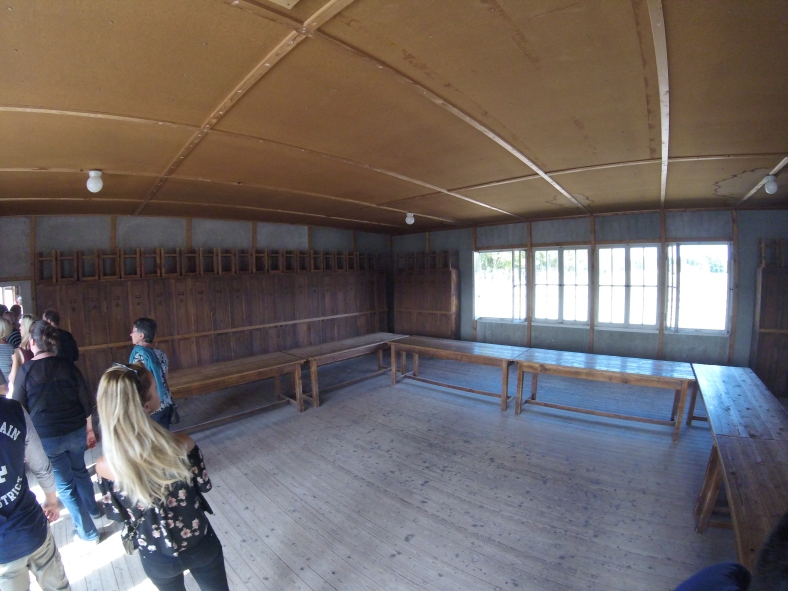
This
was a common area where the prisoners kept their belongings. Notice how
clean the floors are,
as the prisoners were expected to keep them like this at all times in order to avoid extreme punishments.
as the prisoners were expected to keep them like this at all times in order to avoid extreme punishments.
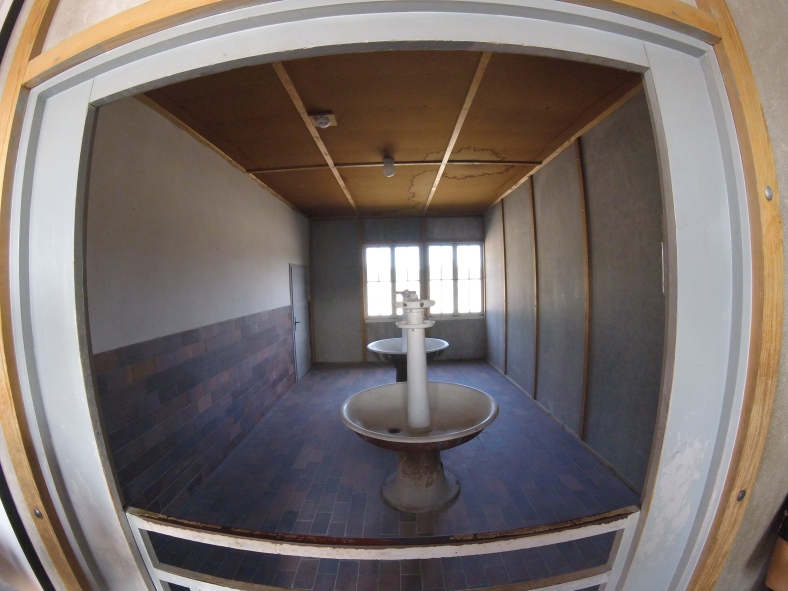
These two sinks were shared by all prisoners in their building, which rose up to 2,000 by the time
of their liberation in 1945.
of their liberation in 1945.
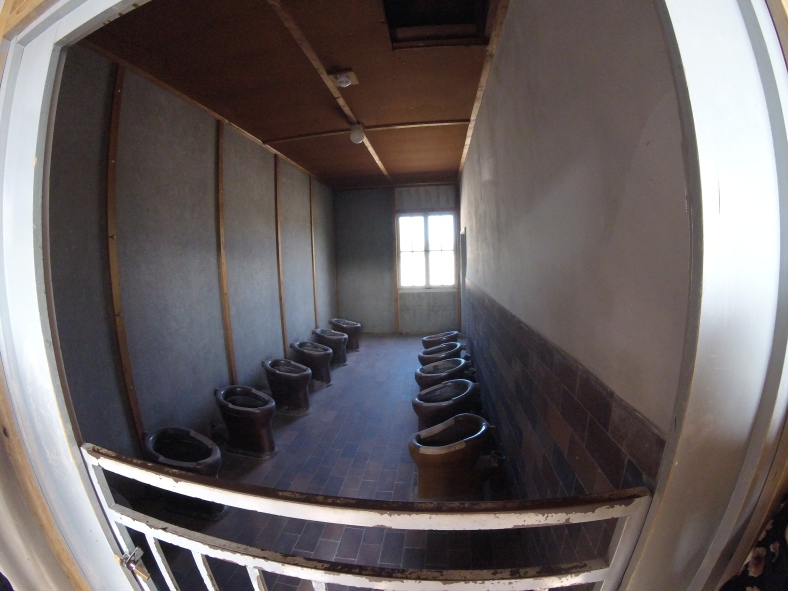
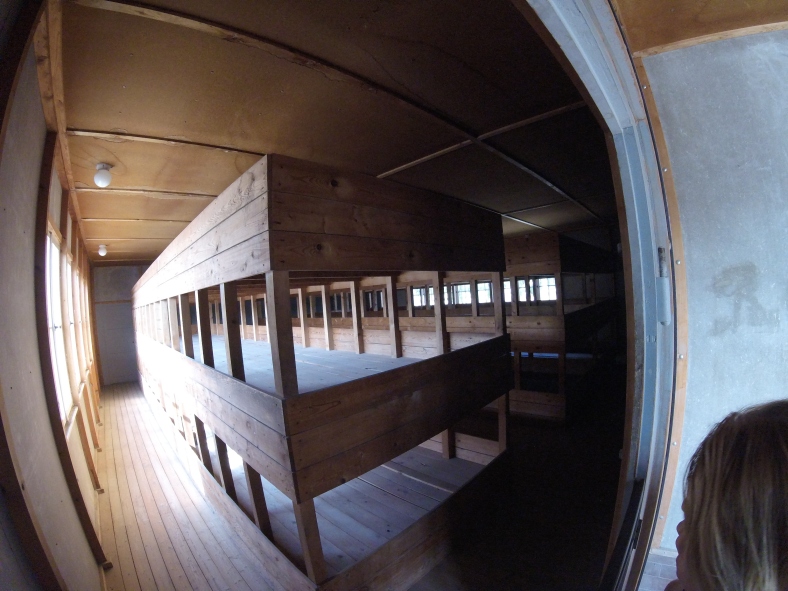
This image depicts how crammed the rooms were by the 1940’s. Over 600 prisoners were expected
to live in this small area.
to live in this small area.
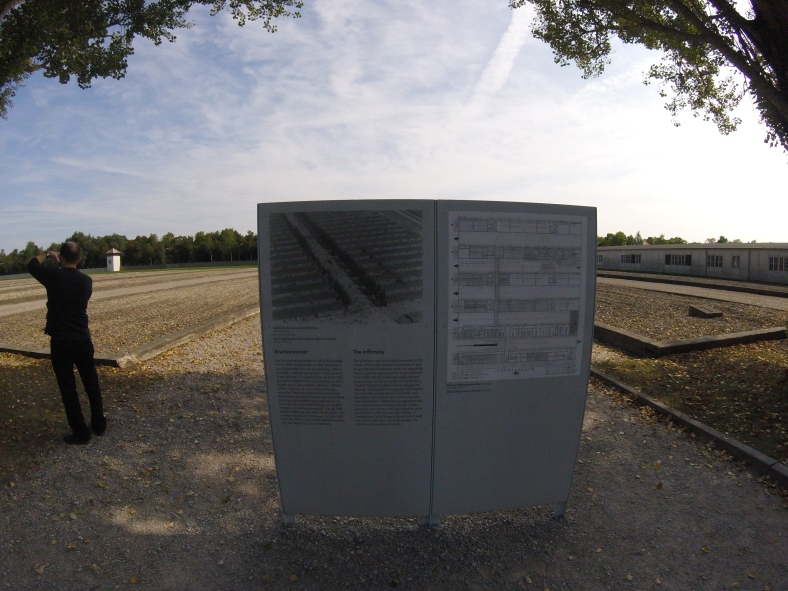
An original picture all of the prisoners’ living corridors, which were lined up directly behind it.
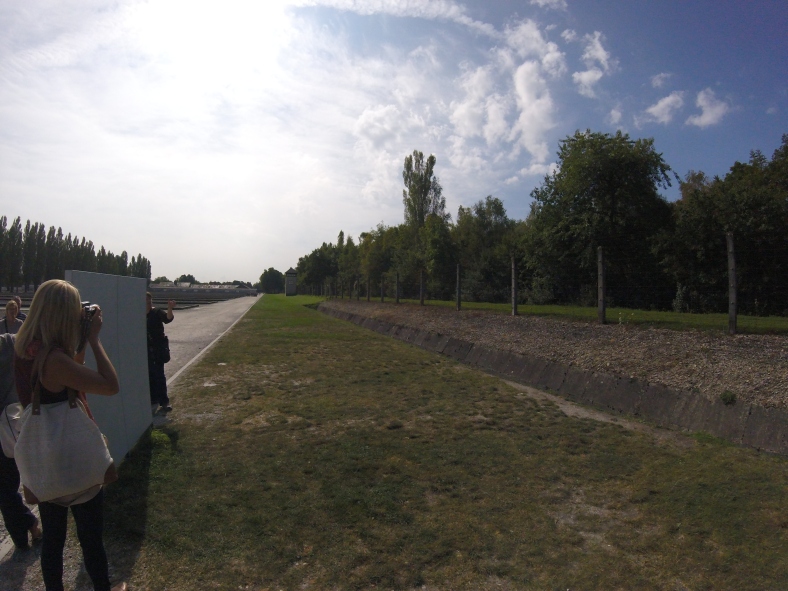
In order to deter prisoners from escaping, anyone who stepped off the gravel on to the grass
would be immediately shot.
would be immediately shot.
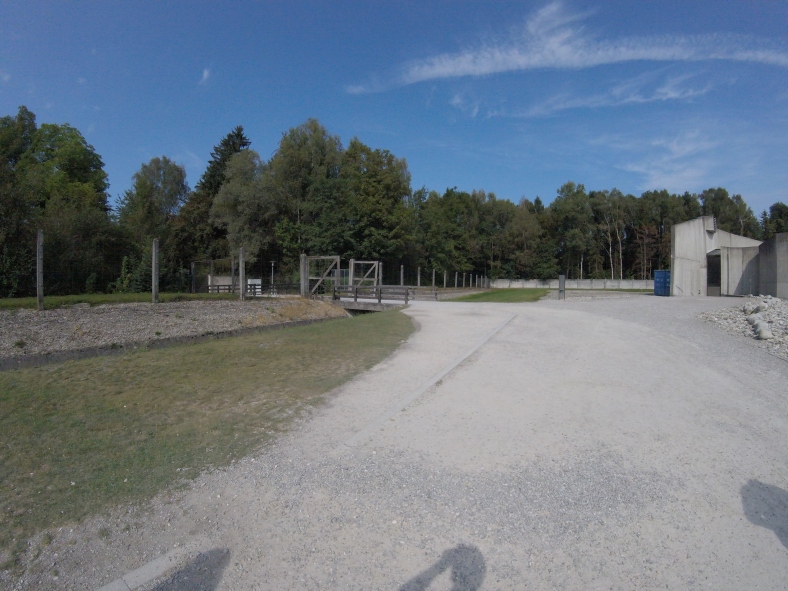
This
road leads to an excluded part of the camp that the prisoner’s knew
nothing about. The road
leads to the camp’s Gas Chamber and Crematoria
leads to the camp’s Gas Chamber and Crematoria
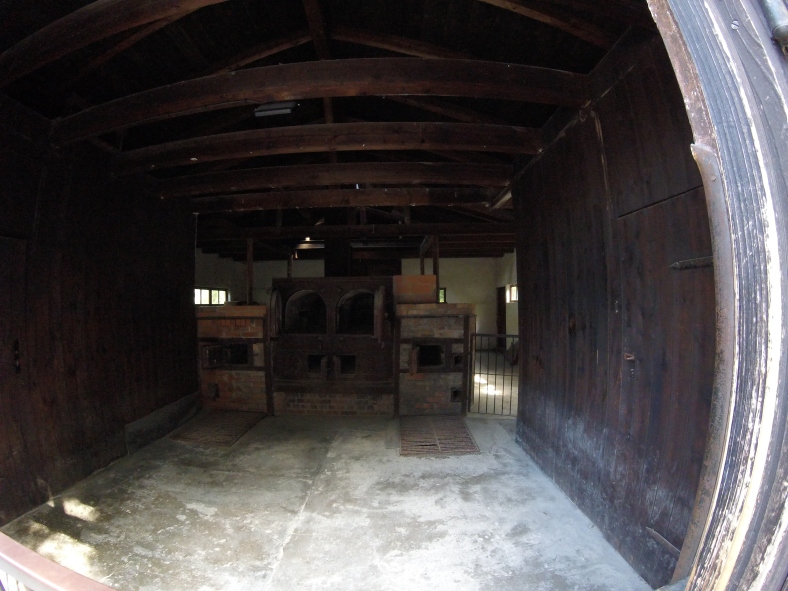
Dachau’s “Old Crematorium”, which was originally built in the mid 1930’s.
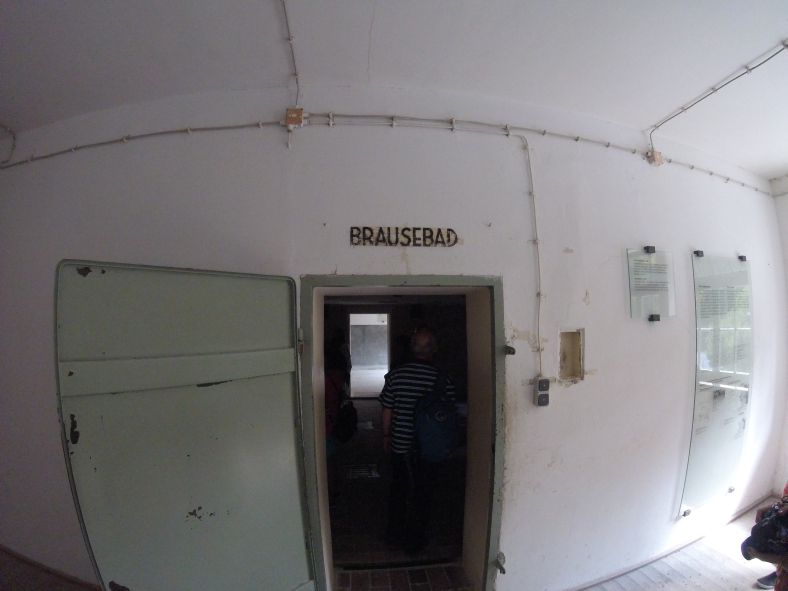
This
would be the last image any prisoner would see who walked into this
particular “Brausebad”,
which means shower. This was actually the entrance to Dachau’s gas chamber, which is one of
the only fully functional gas chambers remaining today. This is extremely significant because it
proves the intentions of Adolf Hitler and the Holocaust.
which means shower. This was actually the entrance to Dachau’s gas chamber, which is one of
the only fully functional gas chambers remaining today. This is extremely significant because it
proves the intentions of Adolf Hitler and the Holocaust.
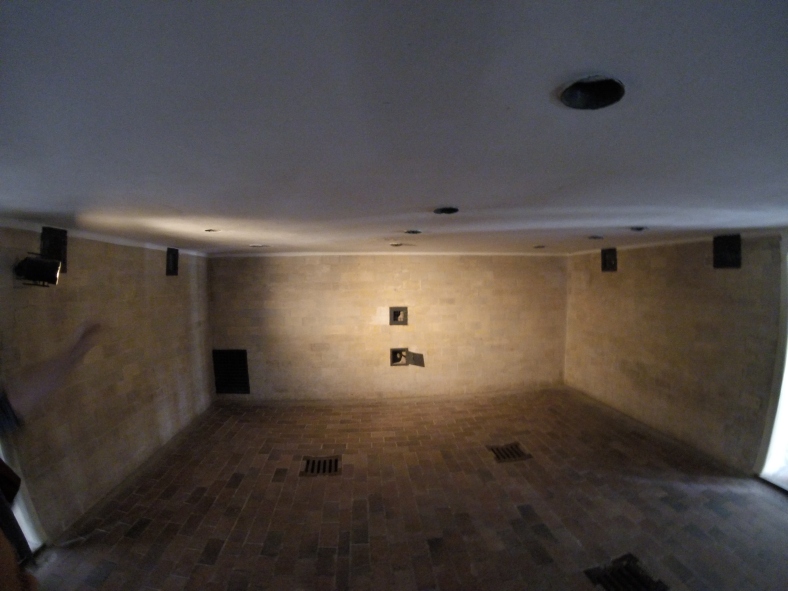
A
view from inside of the gas chamber. It is unknown if this chamber was
ever actually used,
but walking through this room was extremely unpleasant.
but walking through this room was extremely unpleasant.
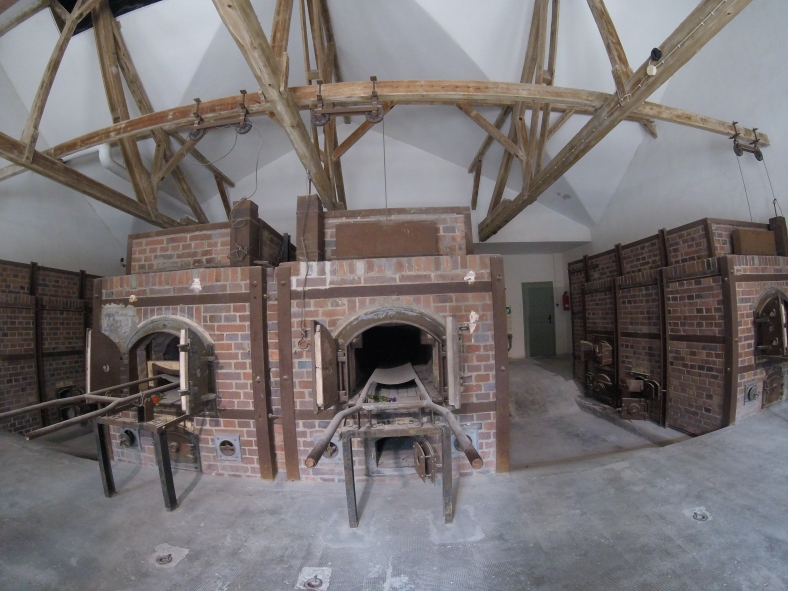
Located just outside of the gas chamber was the newer crematory built in the early 1940’s.
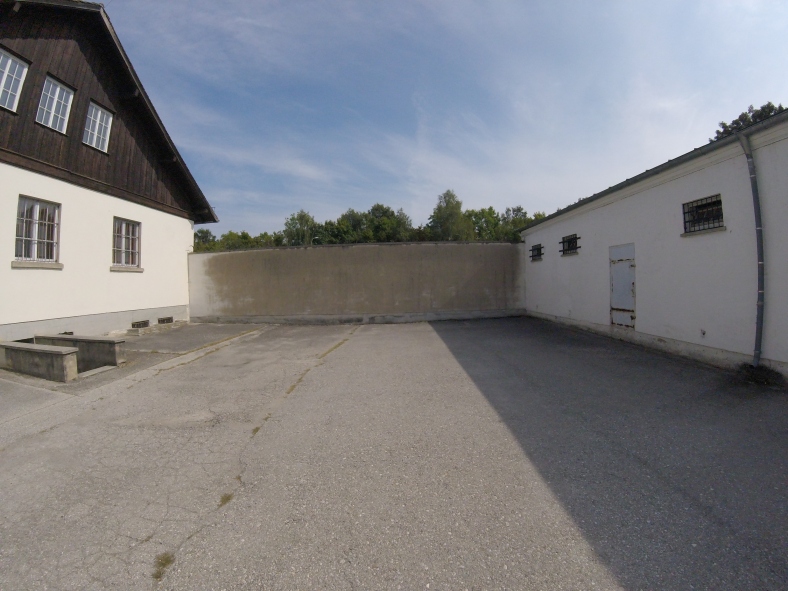
A firing wall, where many political prisoners and prisoner’s of war lost their lives.
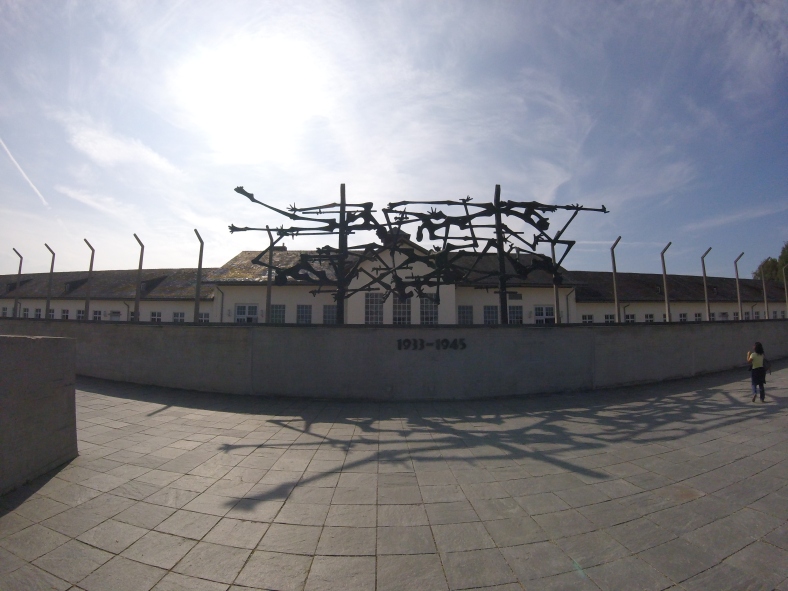
The
main memorial left in the middle of Dachau. This piece of art
represents the many prisoners who
took their own life by throwing themselves into the electric bob wired fence.
took their own life by throwing themselves into the electric bob wired fence.
Changing subjects, the following day we wen to partake in one of Germany’s most famous traditions:
Oktoberfest!
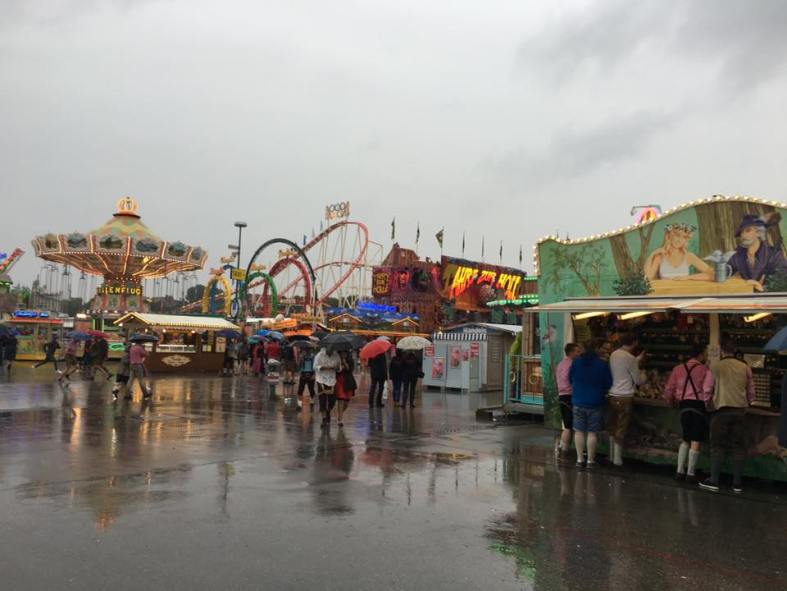
Although it was rainy, it didn’t stop anyone from enjoying the Oktoberfest festivities!
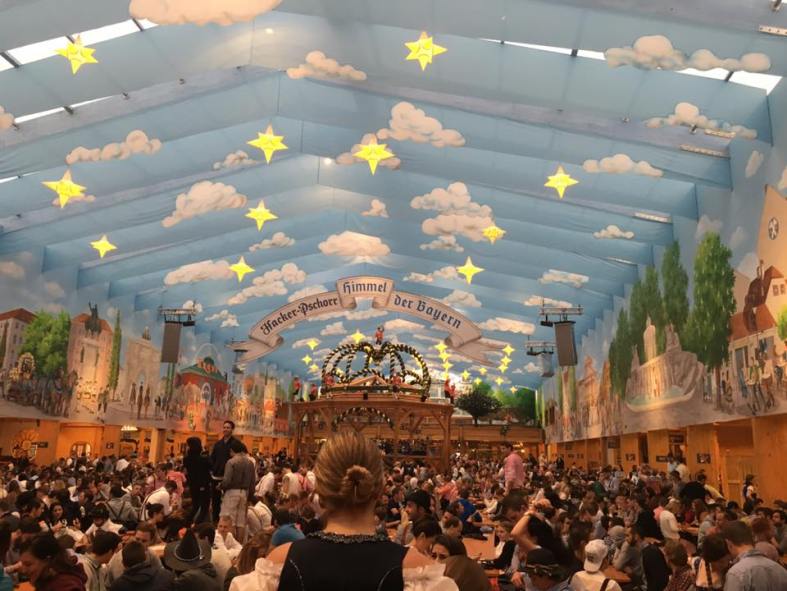
Inside Hacker-Pshot tent. We waited in line for over 4 hours to grab our seats!

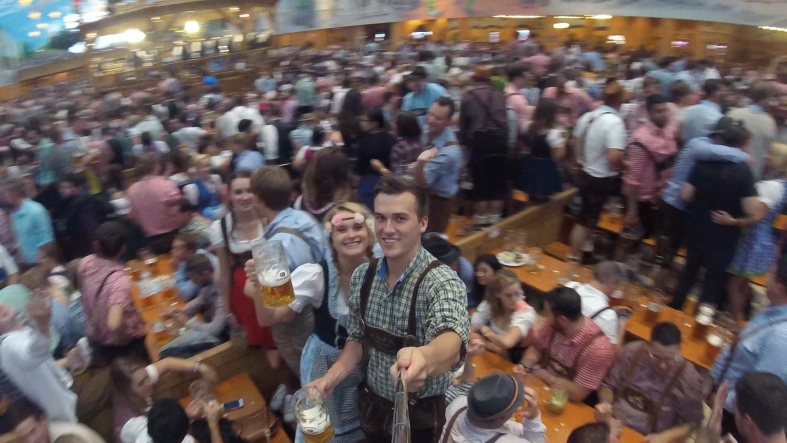
Enjoying the traditions of Oktoberfest, Ein Prosit!
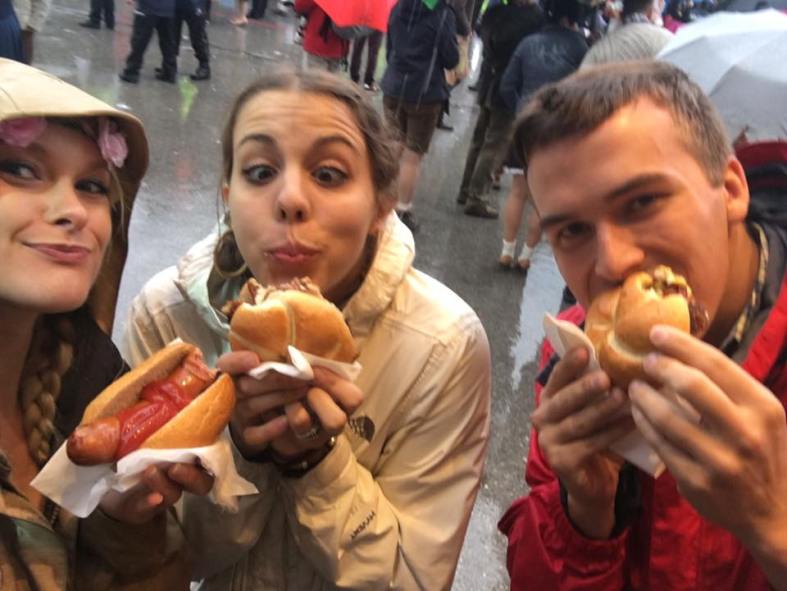
We tried just about every type of food there was to try.
--
Read more from Braden at https://studyflorence.wordpress.com/
Find out more about Braden's Lorenzo de’
Medici Italian program at http://www.ldminstitute.com/
Search for more study abroad opportunities like these in over 50 other countries:
http://studyabroad.uark.edu/search
http://studyabroad.uark.edu/search
